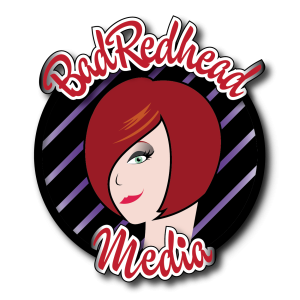Top 5 Considerations When Choosing How to Publish Your Book by guest @Booktrope CMO @ksearsbooks
Top Five Considerations when choosing how to publish your book
Please welcome Katherine Fye Sears, CMO of my publisher, Booktrope, and kickass marketing chick, here to explain the three types of publishing (self, traditional, and hybrid), and the top five considerations of each. I encourage you to read and then pick her brain in comments! Note: Booktrope is currently open to submissions. Read further to find the submissions form.
I am often asked whether Booktrope is self-publishing, or a traditional publisher, and the answer is, neither. [share ]We are most closely defined as a hybrid-publisher[/share], but that term is still not terribly well understood – mainly because depending on who uses it, it means something slightly different. We were featured in a great article in Forbes last year about this overall space. In an effort to make this clearer, I am going to go with a few lists. Lists are all the rage in internet marketing right now, so why not?
I think the important thing to note here is that this is not a list of good or bad, these are just the things to be considered when choosing your particular path. No one path is the correct one for every author, the trick is determining which will make you most successful, and/or happy. These are not always the same thing, so you should probably start by being realistic with yourself on what IS the most important thing to you when putting your work out there!
Self-Publishing – Author is the publisher. Anyone may self-publish and there is no barrier to entry to do so, aside from being ready, willing and able to do the work required. In years past, this was called “vanity publishing” because the costs were astronomical to print and distribute books. These days it is far more affordable and more mainstream, and technology makes it a more reasonable option for consumers.
- In this model the author chooses which services to use – editing, proofing, cover design and marketing. The author also manages all service providers from hiring to quality control. The author also pays for all services. The average here varies greatly, but according to Guy Kawasaki in his book, “A.P.E.” should come in around $4K for a quality book, before you factor in marketing.
- In this case, the author retains a greater royalty share due to the above – typically 70% of the profit from the most common sales channels depending on the list price of the book and whether it is an ebook or print. You will most often be paid monthly, by whichever vendors you choose to list your book with. The most common are Kindle, Nook, iTunes, Smashwords and Createspace (for print). Createspace is a print on demand vendor, owned by Amazon and therefore most bookstores will decline to carry titles printed in this way.
- Responsible for all marketing – therefore, should also be comfortable in the marketing role. You can certainly pay for some marketing services, but most will rely on you to do the day to day things regardless. If you are uncomfortable with social media, in particular, this is going to represent a challenge.
- Time to market is only dependent on your schedule, so can be weeks, months or years. Time it as you wish! On the other hand, because you are responsible for running the publishing business, many authors find that scheduling in time to write is harder the more books they publish.
- To sum up, this is best suited for an entrepreneurial type, i.e. someone who is a self-starter and enjoys controlling all aspects of the publishing business.
Traditional Publishing – note that “choosing” this is actually a bit of a misleading term, as you have many steps to go through before they “choose” you.
- In this model the first step (after writing the book) is getting an agent. Depending on your track record, this can be easy or hard. Having an agent does not guarantee your book will be published. (How to do this is an entire series of posts we won’t get into here).
- Once a publisher has selected your title, you may, or may not receive an advance. This varies so greatly it is not worth putting a number on here. Royalties will also vary, but are typically between 7-15% of the list price of the book. Most common pay structure is bi-annual or quarterly, up to six month in arrears. This is also when you will see your sales results.
- Time to market for a traditionally published book is anywhere from 12-18 months. You will be expected to do at least one more re-write during this time. The publishing house will design your cover, and identify the distribution strategy for your book. You will not be consulted, so be sure you are comfortable with the publisher’s work overall! They will also identify the best distribution strategy for the book, and it is often much more prevalently weighted towards the print market.
- You will still be responsible for most of your own marketing. Marketing undertaken by a publisher is typically limited to solicitation of reviews from traditional sources, and paying for placement in stores. You will be asked to create and keep your own website, social media streams, etc. Should your book perform well following the first print run, more marketing will be offered.
- To sum up, this option is best suited for someone who is deeply committed to the traditional route. It is also well suited to scenarios where a print book is likely to be more successful than the ebook – as this is where bookstores and libraries are still king and where the traditional publishers are still the supplier of choice.
Hybrid Publishing – some combination of the above. Depending on the model, a combination of the features found in self-publishing and traditional publishing will be offered. Obviously I am most familiar with that of Booktrope, so will use that as the example here and will identify where I am aware something will vary for others of this type. 
- Not all authors or all material is accepted, there is a submission and selection process. ([share ]Booktrope is currently open to submissions[/share], you can do so by going through our online form here). This is a nearly universal quality of hybrid publishers.
- Fees to the author may or may not be charged. Booktrope does not charge up-front fees, because we use a team based, profit sharing model. Our system offers a community of the people who are typically service providers in the self-publishing space, or employees in the traditional one. Editors, proofreaders, cover designers and even marketing managers choose projects they wish to work on, in exchange for a percentage of the profit.This means our books receive all the steps needed to be of high quality, but without the author, or Booktrope, having to put up the money. This keeps costs low, and quality high. (If you are interested in becoming a team member, please see our website). Royalties will vary from publisher to publisher, but will most likely land somewhere between self-publishing and traditional (you can see our financial breakdown here). Most hybrid publishers do not offer advances. While we pay monthly, many others pay on a more traditional schedule. This also differs from vanity publishing, as even those companies that do charge up front fees do so to defray the production costs and do not profit by them. In a vanity publishing model, the companies actually made a profit off of the author, regardless of book sales.
- As with self-publishing, time to market with Booktrope depends only on the speed with which a team would like to work. Because our system is a profit sharing one, most teams are motivated to work quickly. In a different hybrid scenario, one where the services are in-house employees, a lengthier time to market should be anticipated. The author is an important part of the process for most hybrid publishers, and they will have creative input along the way, although not total control.
- Marketing at Booktrope is also a combined model. Teams typically include a book manager, who handles things on the marketing side. This does not mean the author is off the hook, however! I like to describe it this way: the author is the voice, but like all voices is better heard when properly amplified and directed. The book manager provides that direction and amplification. Some corporate marketing is also done. In this model the distribution is also a combination of the other two options. All of our titles (and those of the other hybrid publishers I have spoken to) are in the Ingram system, meaning they can be ordered by bookstores. Some are focused on that level of distribution, while others, like Booktrope, view it as a nice to have, and more of a marketing effort for authors than a sources of reliable income (I have written about this topic previously here).
- To sum up – this option is best suited for an author who wants to be part of the process creatively, but doesn’t want total control of all details. They work best as part of a team and community. Lastly, they are ready, willing and able to participate in their marketing efforts online, but also happy for expertise and guidance from someone with expertise in this area.
I hope this has been a helpful look at the ever evolving look at the publishing options. If you would like to learn more about Booktrope, you can read this piece from last year here on BadRedheadMedia about our deal with Amazon or of course – check out our website, find us on Twitter or Facebook. Please comment or ask any questions below!


[…] like a traditional house. What makes them different is their team approach — you can read all the specifics here in this wonderful explanation by CMO Katherine Fye Sears — so I won’t go into it here. Basically, you make more […]
I have a book that I wrote and edited, and now I am weighing my options when it comes to publishing. I think it would be smart if I self published since I could just get the book out there. I will definitely remember to keep these tips in mind and make sure I market my book s much as possible.